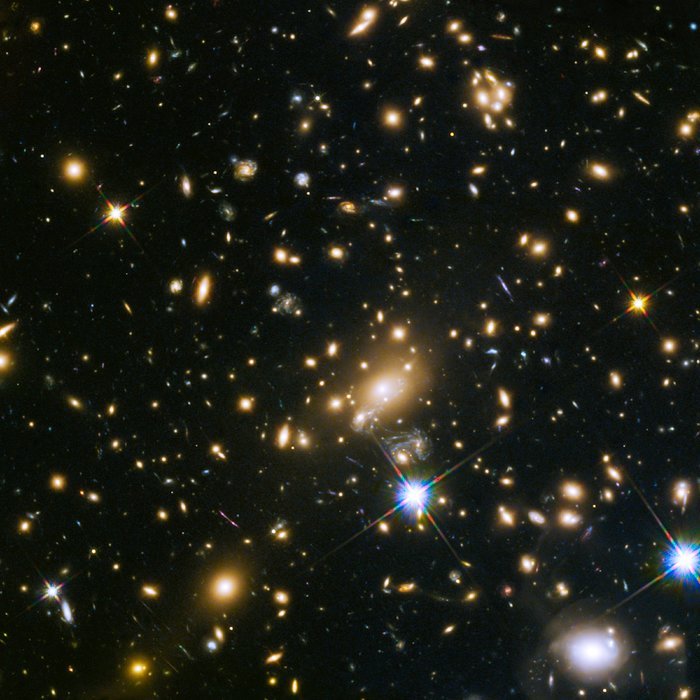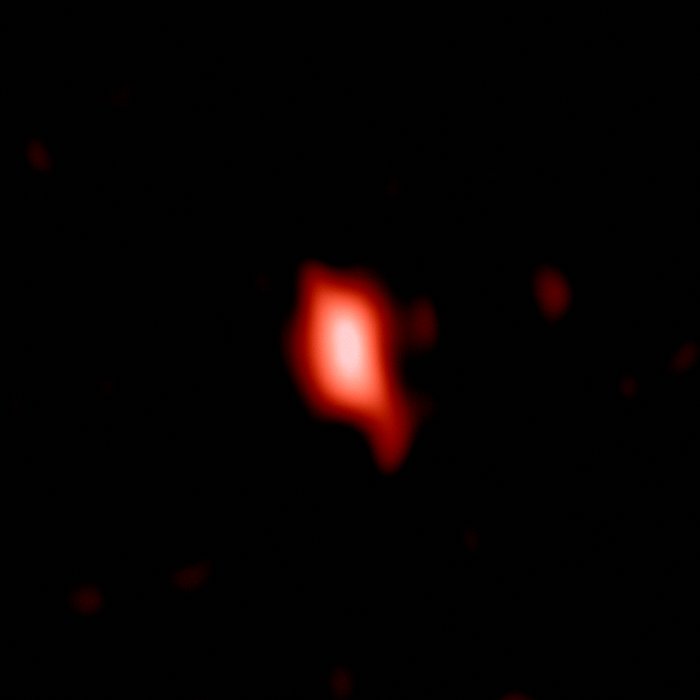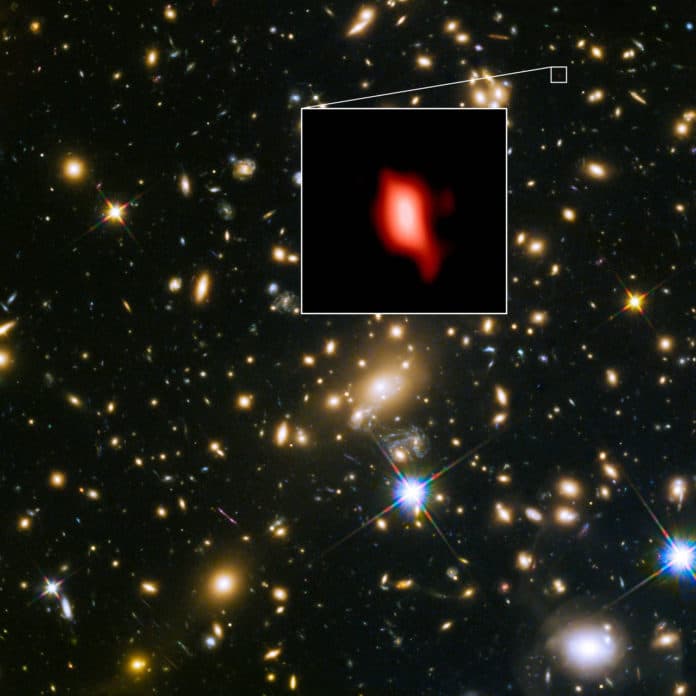Atacama Large Millimeter/submillimeter Array (ALMA) and ESO’s Very Large Telescope (VLT) have captured the evidence on star formation in the very distant galaxy MACS1149-JD1 suggesting that the formation started at an unexpectedly early stage, only 250 million years after the Big Bang. An international team of astronomers used ALMA to observe a distant galaxy called MACS1149-JD1.
Scientists identified a very faint glow emitted by ionized oxygen in the galaxy. As this infrared light traversed space, the extension of the Universe extended it to wavelengths in excess of ten times longer when it achieved Earth and was identified by ALMA.

The group derived that the signal was produced 13.3 billion years ago (or 500 million years after the Big Bang), making it the most distant oxygen at any point distinguished by any telescope [1]. The presence of oxygen is a clear sign that there must have been even earlier generations of stars in this galaxy.
In addition, ALMA also detected a weaker signal of hydrogen emission was also detected by ESO’s Very Large Telescope (VLT).
Nicolas Laporte, a researcher at University College London (UCL) in the UK said, “This galaxy is seen at a time when the Universe was only 500 million years old and yet it already has a population of mature stars. We are therefore able to use this galaxy to probe into an earlier, completely uncharted period of cosmic history.”
In order to discover when did the star formation occurred, scientists reconstructed the earlier history of MACS1149-JD1 using infrared data taken with the NASA/ESA Hubble Space Telescope and the NASA Spitzer Space Telescope. They found that the observed brightness of the galaxy is well-explained by a model where the onset of star formation corresponds to only 250 million years after the Universe began.

For a period after the Big Bang, there was no oxygen in the Universe; it was made by the combination procedures of the primary stars and afterward discharged when these stars kicked the bucket. The recognition of oxygen in MACS1149-JD1 demonstrates that these prior ages of stars had been now shaped and ousted oxygen by only 500 million years after the start of the Universe.
The maturity of the stars seen in MACS1149-JD1 raises the question of when the very first galaxies emerged from the total darkness, an epoch of astronomers romantically term “cosmic dawn”. By establishing the age of MACS1149-JD1, the team has effectively demonstrated that galaxies existed earlier than those we can currently directly detect.
Richard Ellis, a senior astronomer at UCL and co-author of the paper, concludes: “Determining when cosmic dawn occurred is akin to the Holy Grail of cosmology and galaxy formation. With these new observations of MACS1149-JD1, we are getting closer to directly witnessing the birth of starlight! Since we are all made of a processed stellar material, this is really finding our own origins.”
These results are published in a paper by T. Hashimoto et al., to appear in the journal Nature on 17 May 2018.
